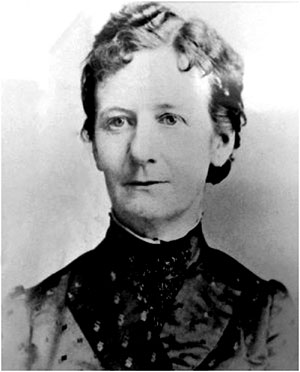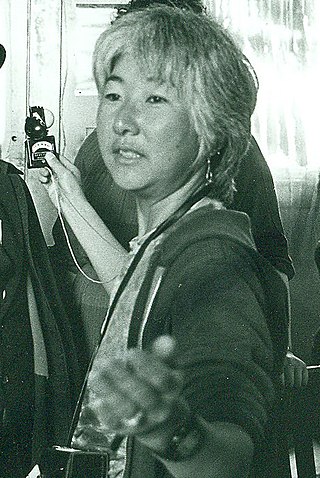Related Research Articles

Orgasm or sexual climax is the sudden discharge of accumulated sexual excitement during the sexual response cycle, resulting in rhythmic, involuntary muscular contractions in the pelvic region characterized by sexual pleasure. Experienced by males and females, orgasms are controlled by the involuntary or autonomic nervous system. They are usually associated with involuntary actions, including muscular spasms in multiple areas of the body, a general euphoric sensation, and, frequently, body movements and vocalizations. The period after orgasm is typically a relaxing experience, attributed to the release of the neurohormones oxytocin and prolactin as well as endorphins.

The G-spot, also called the Gräfenberg spot, is characterized as an erogenous area of the vagina that, when stimulated, may lead to strong sexual arousal, powerful orgasms and potential female ejaculation. It is typically reported to be located 5–8 cm (2–3 in) up the front (anterior) vaginal wall between the vaginal opening and the urethra and is a sensitive area that may be part of the female prostate.

A sex toy is an object or device that is primarily used to facilitate sexual pleasure, such as a dildo, artificial vagina or vibrator. Many popular sex toys are designed to resemble human genitals, and may be vibrating or non-vibrating. The term sex toy can also include BDSM apparatus and sex furniture such as sex swings; however, it is not applied to items such as birth control, pornography, or condoms. Alternative terms for sex toy include adult toy and the dated euphemism marital aid. Marital aid also has a broader meaning and is applied to drugs and herbs marketed to enhance or prolong sex.

Erotic massage is the use of massage techniques by one person on another person's erogenous zones for their sexual pleasure. The process may achieve or enhance the recipient's sexual excitation or arousal and sometimes achieve orgasm. The person providing the massage is called a masseur (male) or masseuse (female). Massages have been used for medical purposes for a very long time, and their use for erotic purposes also has a long history. In the case of women, the two focal areas are the breasts and pubis, while in case of men, the focal areas are the male breast muscles and nipples, male genitals, the anus, and the prostate. When the massage is of a partner's genitals, the act is usually referred to as a handjob for penises and fingering for vulvas.

Betty Dodson was an American sex educator. An artist by training, she exhibited erotic art in New York City, before pioneering the pro-sex feminist movement. Dodson's workshops and manuals encourage women to masturbate, often in groups.

Female hysteria was once a common medical diagnosis for women. It was described as exhibiting a wide array of symptoms, including anxiety, shortness of breath, fainting, nervousness, sexual desire, insomnia, fluid retention, heaviness in the abdomen, irritability, loss of appetite for food or sex, even sexually forward behavior, and a "tendency to cause trouble for others". It is no longer recognized by medical authorities as a medical disorder. Its diagnosis and treatment were routine for hundreds of years in Western Europe.

A vibrator, sometimes described as a massager, is a sex toy that is used on the body to produce pleasurable sexual stimulation. There are many different shapes and models of vibrators. Most modern vibrators contain an electric-powered device which pulsates or throbs. Vibrators can be used for both solo play and partnered play by one or more people. Devices exist to be used by couples to stimulate the genitals of both partners. They can be applied to erogenous zones, such as the vulva, vagina, penis, scrotum, or anus, for sexual stimulation, for the release of sexual frustration and to achieve orgasm. Vibrators may be recommended by sex therapists for women who have difficulty reaching orgasm through masturbation or intercourse.
Joani Blank was an American sex educator, entrepreneur, author, videographer, cohousing enthusiast, philanthropist, and inventor in the field of sexuality. She used publishing, her sex store, and other endeavors to promote sex-positive feminism. Her papers are part of the Human Sexuality Collection at Cornell University Library.

The Magic Wand aka the True Magic Wand,Magic Wand Original, Vibratex Magic Wand and Original Magic Wand) is an AC-powered wand vibrator. It was originally manufactured for relieving tension and relaxing sore muscles; however, it is most known for its use as a sex toy. Japanese company Hitachi listed the device for business in the United States in 1968. Sex educator Betty Dodson popularized its use as a vibrator and masturbation aid for women during the sex-positive movement in the late 1960s. It functions effectively as a clitoral vibrator, to bring people to orgasm. The wand is 12 inches (30 cm) long and weighs 1.2 pounds (540 g) with stimulation provided by its rubberized 2.5-inch (64 mm) head.
In the Next Room (or The Vibrator Play) is a 2009 play by Sarah Ruhl, published by Samuel French. It concerns the early history of the vibrator, when doctors allegedly used it as a clinical device to bring women to orgasm as treatment for "hysteria." Other themes include Victorian ignorance of female sexual desire, motherhood, breastfeeding, and jealousy. The play was nominated for three 2010 Tony Awards.

A sex machine is a mechanical device used to simulate human sexual intercourse or other sexual activity.

Hysteria is a 2011 British period romantic comedy film directed by Tanya Wexler. It stars Hugh Dancy and Maggie Gyllenhaal, with Felicity Jones, Jonathan Pryce, and Rupert Everett appearing in key supporting roles. The film, set in the Victorian era, shows how the medical management of hysteria led to the invention of the vibrator.

Thérèse de Dillmont was an Austrian needleworker and writer. Dillmont's Encyclopedia of Needlework (1886) has been translated into 17 languages. She owned a string of shops in European capitals and she was "one of the most important pioneers in the international and multicultural enterprise of hobby needlework in the late nineteenth century".

Joseph Mortimer Granville was an English physician, author and inventor known for having first patented the electromechanical vibrator for relief of muscle aches, exclusively for male patients. It was also claimed by Rachel Maines that the device was used to treat hysteria, by bringing women to orgasm, but her work is not historically accurate.

Jean Dollfus was a French industrialist who grew a textile company, Dollfus-Mieg et Compagnie (D.M.C.), in Mulhouse. Dollfus was a leading figure in a philanthropic society which constructed a company town that sold houses at cost to the town's workers. Dollfus also helped publish an encyclopedia of needlework.

Fei-Fei Li is a China-born American computer scientist, known for establishing ImageNet, the dataset that enabled rapid advances in computer vision in the 2010s. She is Sequoia Capital professor of computer science at Stanford University and former board director at Twitter. Li is a co-director of the Stanford Institute for Human-Centered Artificial Intelligence and a co-director of the Stanford Vision and Learning Lab. She served as the director of the Stanford Artificial Intelligence Laboratory from 2013 to 2018.
Sex technology, also called sex-tech or sextech, is technology and technology-driven ventures that are designed to enhance, innovate, or otherwise change human sexuality and/or the human sexual experience. Use of the term was propagated online by Cindy Gallop from MLNP and is associated with an advancement of the Digital Revolution from 2010 and its impact on society and culture. It is often used in conjunction or interchangeably with the term 'teledildonics' referring to the remote connection between Bluetooth enabled sex toys that use haptic feedback to reciprocate or mimic human, sexual interaction. However, teledildonics is far more representative of Bluetooth-enabled sex toys and captures the technological capacities of its time whereas sex-technology is rooted in more modern discourse. As such, the word sex-tech is an umbrella term used to describe multiple technologies spanning from VR porn, health and sexual wellness platform or app-based technology, Bluetooth enabled sex toys, pornography video scripting, remote sex interfaces and sex robots.

Emiko Omori is an American cinematographer and film director known for her documentary films. Her feature-length documentary Rabbit in the Moon won the Best Documentary Cinematography Award at the 1999 Sundance Film Festival and an Emmy Award after it was broadcast on PBS that same year. One of the first camerawomen to work in news documentaries, Omori began her career at KQED in San Francisco in 1968.
Hallie Lieberman is an American writer and a sex and gender historian. Her first book, Buzz: The Stimulating History of the Sex Toy (2017) traces the history of sex toys in the USA from the 1950s to the present. Lieberman teaches science and technology journalism at the Georgia Institute of Technology.
Pelvic massage was a gynecological treatment first recorded as being used by doctors in the 19th century. An early practitioner was the Swedish Major Thure Brandt (1819–1895), whose method was described in the New York Medical Journal and the Journal of the American Medical Association.
References
- ↑ CV of Rachel P. Maines
- ↑ Cornell University Faculty Profile for Rachel P. Maines
- ↑ Lieberman, Hallie (January 23, 2020). "(Almost) Everything You Know About the Invention of the Vibrator Is Wrong". The New York Times . Retrieved January 23, 2020.
- 1 2 Cornell University. Dr. Rachel P. Maines. Retrieved 26 December 2016.
- ↑ Sexton, Sharon (12 December 1975). "Needle Art Reveals History", p. 22. Mansfield News Journal via UPI. Retrieved 26 December 2016.
- ↑ [Crater Lake National Park (N.P.), General Management Plan: Environmental Impact Statement, p. 265, middle, right side]
- ↑ Historical and Scientific Resources on Crater Lake National Park, 392 pages, 17 March 1998, prepared by Rachel P. Maines and Associates under contract for the National Park Service. Ithaca, NY
- 1 2 Kling, Cynthia (14 August 1999). "Objects of Desire". The Independent . Retrieved 26 December 2016.
- ↑ Upson, Sandra (1 August 2007). "Tracing the Technology of Pleasure, Rachel Maines's quirky research project makes it to the big screen". IEEE Spectrum. Retrieved 26 December 2016.
- ↑ Wypijewski, JoAnn (30 May 2012). "Playing Doctor". The Nation . Retrieved 26 December 2016.
- ↑ American Historical Association. Herbert Feis Award Recipients. Retrieved 26 December 2016.
- ↑ Straus, Tamara (22 February 2008). "Review: 'Passion & Power' touts vibrators". San Francisco Chronicle . Retrieved 27 December 2016.
- ↑ King, Helen (2011). "Galen and the widow: towards a history of therapeutic masturbation in ancient gynaecology" EuGeStA: Journal on Gender Studies in Antiquity, 1 pp. 205-235. Retrieved 08 August 2018.
- ↑ Jaffray, Sarah (15 August 2015). "Hysteria" Retrieved 08 August 2018.
- ↑ "Awards, Revue EuGeStA" . Retrieved 3 September 2018.
- 1 2 Lieberman, H., & Schatzberg, E. (2018). "A failure of academic quality control: The Technology of Orgasm," Journal of Positive Sexuality, Vol. 4, No. 2, pp. 24-47.
- ↑ Lieberman, Hallie (January 23, 2020). "(Almost) Everything You Know About the Invention of the Vibrator Is Wrong". The New York Times . Retrieved January 23, 2020.
- ↑ Meyer, Robinson; Fetters, Ashley. "Victorian-Era Orgasms and the Crisis of Peer Review". Archived from the original on Feb 1, 2023. Retrieved October 9, 2023.
- ↑ Knowles, Scott Gabriel (January 2007). "Review: Asbestos and Fire: Technological Trade-Offs and the Body at Risk by Rachel Maines". Technology and Culture , Vol. 48, No. 1, pp. 175-177. Retrieved via JSTOR 26 December 2016 (subscription required).
- ↑ Fischer, Suzanne (7 November 2011). "The Technology of Socks in a Time of War, A historian traces the history of humble footwear in the trenches". The Atlantic . Retrieved 26 December 2016.
- ↑ Gelber, Steven M. (Summer 2010). "Review: Hedonizing Technologies: Paths to Pleasure in Hobbies and Leisure by Rachel P. Maines The Business History Review , Vol. 84, No. 2, pp. 400-402. Retrieved via JSTOR 26 December 2016 (subscription required).
- ↑ Cornell University Faculty Profile for Rachel P. Maines